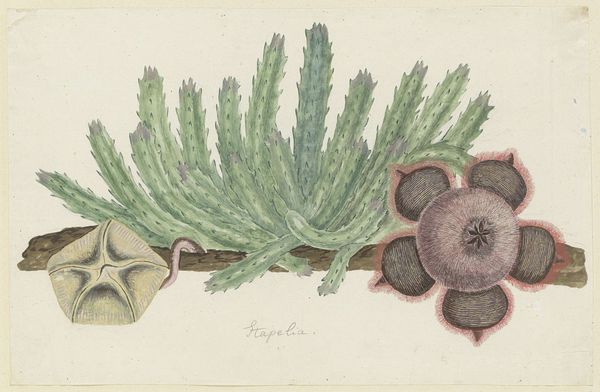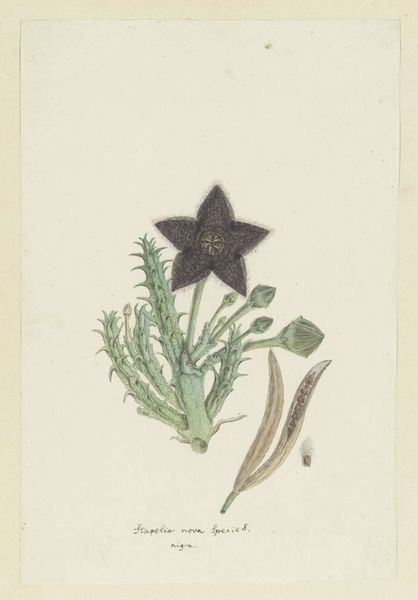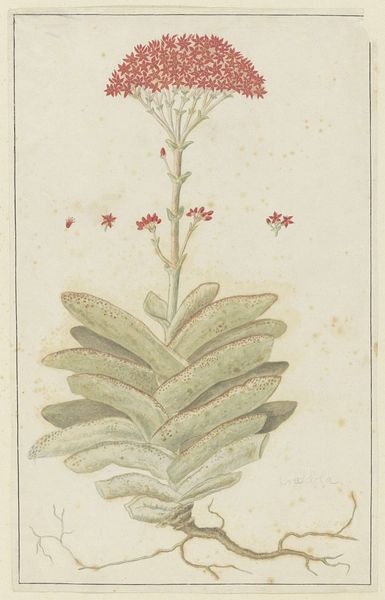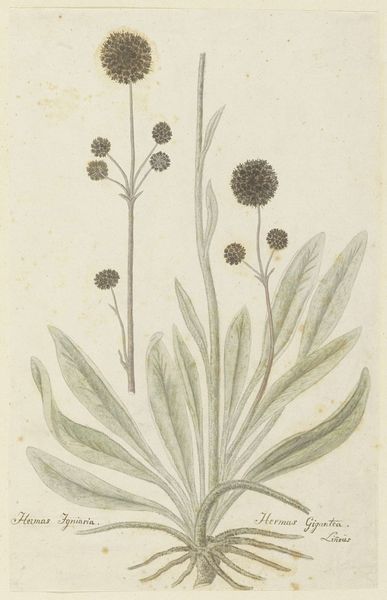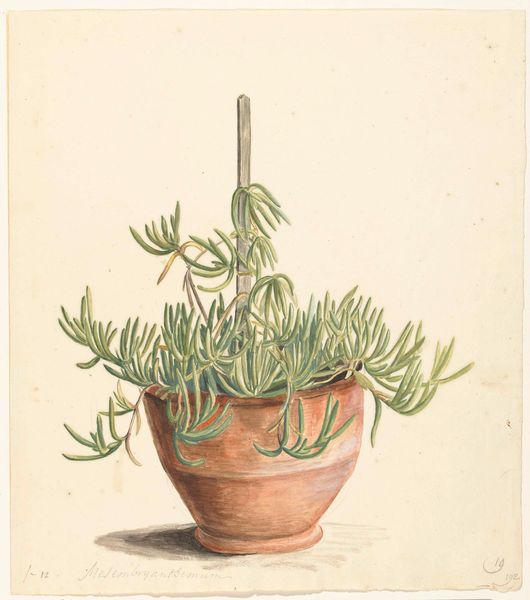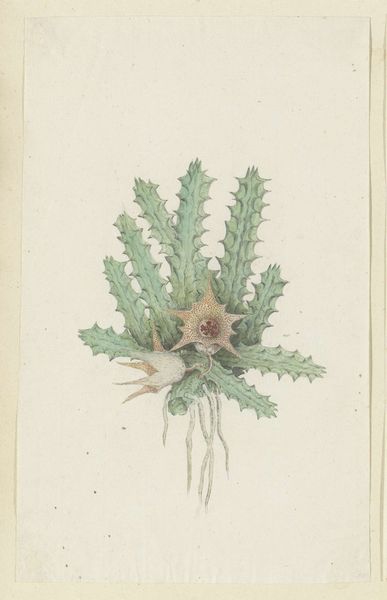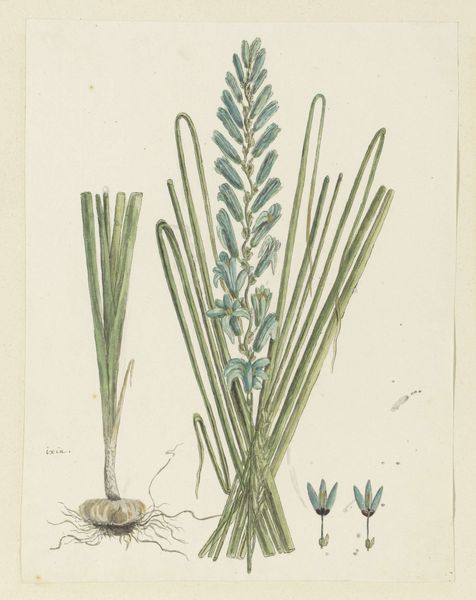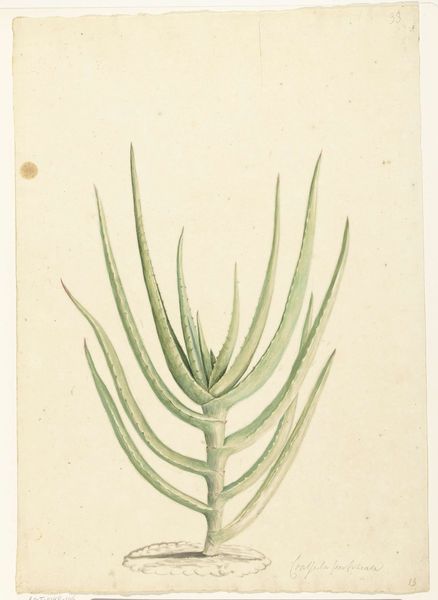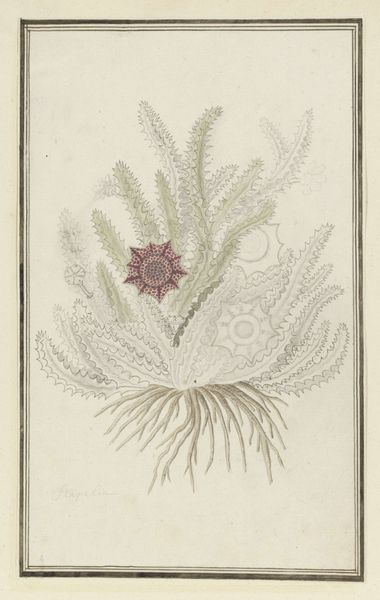
Orbea verrucosa (Masson) L.C. Leach.(SHirsute stapelia) Possibly 1777 - 1786
0:00
0:00
drawing, coloured-pencil, watercolor
#
drawing
#
coloured-pencil
#
watercolor
#
coloured pencil
#
watercolour illustration
#
botanical art
Dimensions: height 660 mm, width 480 mm, height 276 mm, width 432 mm, height mm, width mm
Copyright: Rijks Museum: Open Domain
Curator: What a peculiar-looking plant. It’s giving me a somewhat gothic sensibility. Editor: Indeed! I find it simultaneously captivating and unsettling. Let’s delve into its origins. This artwork, titled *Orbea verrucosa*, also known as "hirsute stapelia," is attributed to Robert Jacob Gordon, dating possibly from 1777 to 1786. He captured it using a combination of drawing, colored pencil, and watercolor. Curator: Considering the historical context of the late 18th century, I immediately consider this depiction through the lens of colonial exploration. What narratives are embedded in this image regarding power dynamics, the scientific gaze, and the appropriation of indigenous knowledge about botany? Editor: That's a crucial entry point. Gordon, as a military commander in service of the Dutch East India Company, definitely embodied the spirit of scientific colonialism. His visual record is more than pretty pictures of flowers, but a record of the assertion of dominion over nature. Consider also how the act of illustration, categorizing and naming, plays into that control. Curator: Exactly. This artwork, despite its botanical focus, exists in relation to exploitation, and demands interrogation beyond aesthetics. How does Gordon’s rendition reflect or perhaps even distort the reality of *Orbea verrucosa*? Who are the silent voices, the native populations whose relationship with this plant might differ significantly from European colonial interests? Editor: Beyond the sociopolitical, let’s consider what the work can reveal about botanical illustration itself. Gordon meticulously detailed the plant’s succulent stems and striking, star-shaped flowers. Notice the textures— the rough, almost hairy surface of the large flower is quite striking compared to the smooth quality of the petals of the small, star shaped bloom. Curator: Yes, I am immediately struck by the visual contrast between the rigidity of the upright stems and the somewhat monstrous blossom of the hirsute stapelia. It speaks to a tension between control and wildness that could also mirror Gordon’s position as colonizer encountering the unfamiliar. Editor: Well put. And these considerations around a drawing expand when we look at its social and political roles at that moment. Curator: A perspective that’s equally vital if we wish to understand how these works resonate and challenge today’s perspectives.
Comments
No comments
Be the first to comment and join the conversation on the ultimate creative platform.
